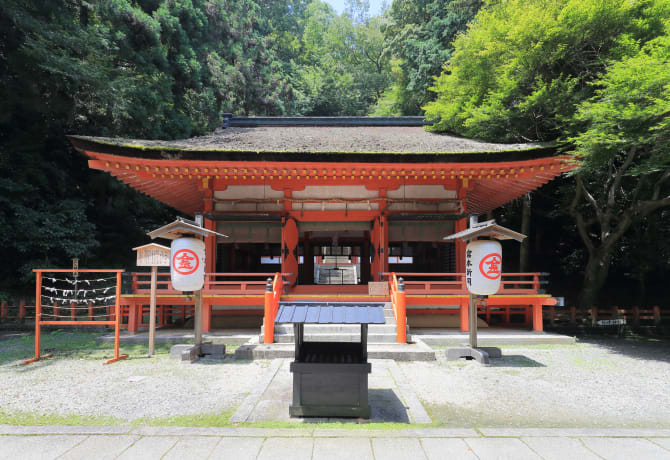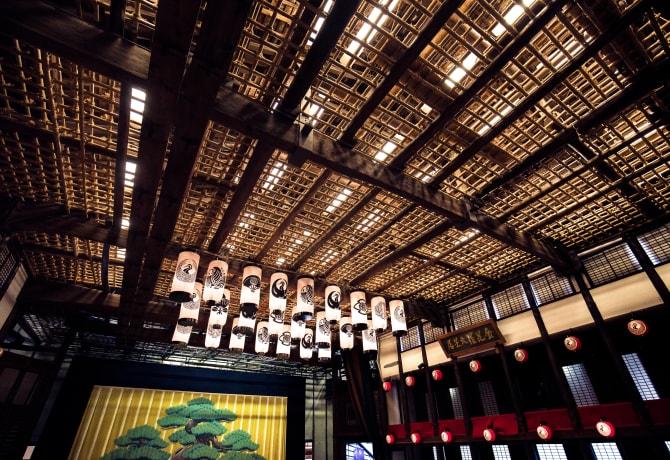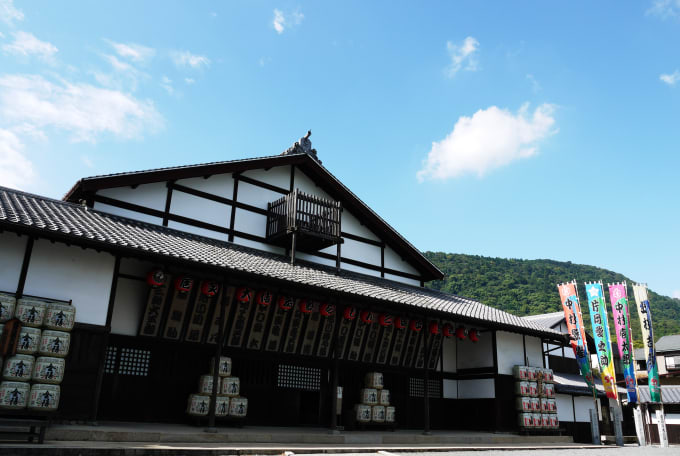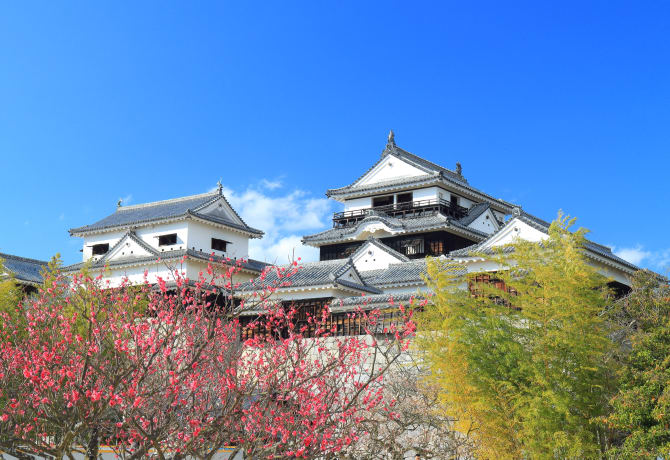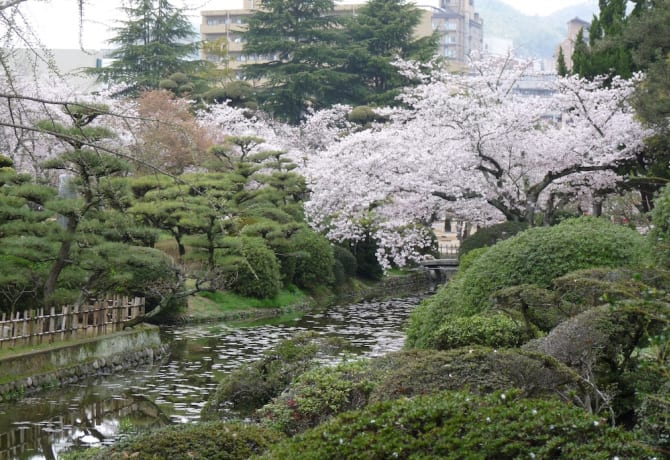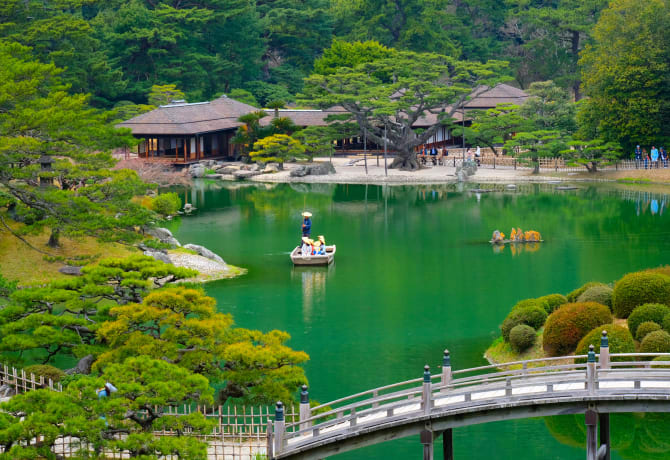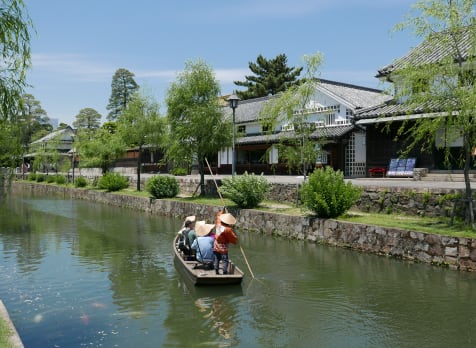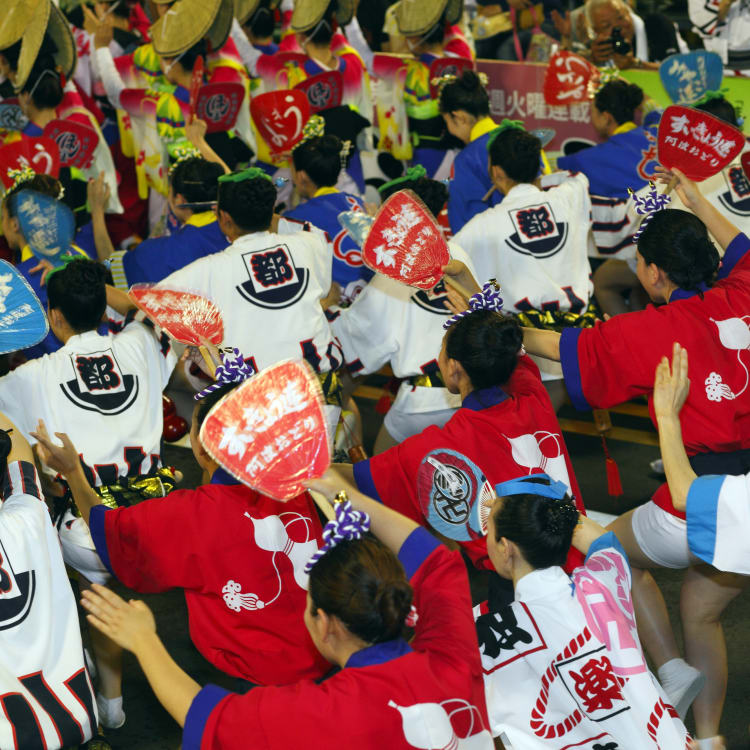

ITINERARIES Shikoku's Nature and Traditions Explore a history filled with castles, shrines and dancing on the lush island of Shikoku
Shikoku is one of the main islands forming the Japanese archipelago, nestled between the Seto Inland Sea and the Pacific Ocean.
Highlights
- Enjoying the Obon festivities at Awa-Odori Matsuri, one of the biggest dance festivals
- Seeing Kochi and Matsuyama Castles, two of the 12 original castle keeps of Japan
- Relaxing in one of the oldest hot springs in Japan at Dogo Onsen
Tokushima City , the capital of Tokushima Prefecture on Shikoku Island , is most known for its Awa-Odori Matsuri, a four-day dance festival that takes place during Obon. From August 12 to 15 every year, you can see traditional dance groups perform on the streets throughout the city.
If you aren't visiting during the festival, you can still learn about this 400-year old dance at Awa Odori Kaikan Hall. Multiple performances are held daily all year-round at this venue.
Another cultural spot to check out is the Otsuka Museum of Art. This is Japan's largest exhibition space and houses roughly 1,000 reproductions of ancient and modern paintings such as Leonardo da Vinci’s “Last Supper” and Monet’s “Water Lilies.”
Nearby, Mt. Bizan offers unparalleled views of the area. This mountain is a defining point of the region. Ride the ropeway to the summit and visit the Pagoda Peace Monument and the Kaleidoscope Museum while taking in the views.
From the top, you can enjoy a closer look at Naruto Park. Located along the Naruto Strait, these numerous whirlpools have been featured in numerous works. See them from the observatory or take an excursion boat to get closer.
A sleepy port city on the north side of Shikoku in Kagawa Prefecture , Takamatsu City is a gateway into the region's rich past.
The place to see it all is Shikoku-mura (Shikoku Village), an open-air museum that features 33 folk houses and warehouses. Walk along the paths and discover how locals lived in the Edo and Taisho periods.
Across town in Kotohira , you can pray for safe sea travels at Konpiragu Shrine. Konpiragu Shrine is most known for the 1,380 steps that lead to the shrine. And in the past, many people dreamed of visiting this shrine once in their lives.
Near the base of the shrine is Kanamaruza, the oldest existing playhouse in Japan built in 1835. Visit in April to watch Kabuki actors perform dramas.
For some more adrenalin-inducing activities, head to Oboke Gorge by the Yoshino River. Here, you can enjoy rafting at Koboke-kei.
Relax close by at Hotel Shin-Iya, set deep within the mountains. Today, you can enjoy open-air baths accessible by cable car. While this area can be difficult to access, it provides a remote getaway in the heart of Shikoku.

According to legend, warriors who lived in the valley some 800 years ago made Kazura Bridge, a suspension bridge made of shirakuchikazura vine that grows on the mountain. Visit in October, when the nearby trees turn shades of red.
Kochi City is the political, cultural and economic hub of Kochi Prefecture . And in the center of this city is Kochi Castle . Built in 1753, it is one of 12 ancient castles in Japan to have survived the years. The view is best in late March when the cherry blossoms are in full bloom.
Not far from the castle is Nichiyo-ichi (Sunday Market), a market with 300 years of history. Despite its name, the market is open every day at 6 a.m. and sells everything from udon noodles to antiques.
If you need to relax, take a stroll along Katsurahama Beach . Located on the Pacific Ocean, this beach is famous for its ocean views. While here, you can check out the Ryoma Sakamoto Memorial Museum, a museum about a hero from the prefecture.
But the biggest draw of all is the Yosakoi Festival. Held August 9 to 12 every year, yosakoi dance troupes come from all over the country to perform in this festival. See, hear and experience Kochi culture.
Located in Ehime Prefecture , Matsuyama City is a humble castle town. In its center is Matsuyama Castle . Built in 1602, it's one of the 12 castles in Japan to have survived.
Less than 20 minutes by tram is one of Japan's most famous hot springs, Dogo Onsen . Dogo Onsen is the oldest spa in Japan. From the city, you can take the Botchan Train, named after the 19th-century novel "Botchan" that features Dogo Onsen. (Operates on weekends and holidays.)
For shopping, visit Dogo Shotengai shopping street. This area has numerous small shops that sell traditional Japanese crafts and confections.
And if you want to relax, Dogo Park is a green space with plenty to do. You can see reproductions of samurai residences, enjoy haiku poetry at The Shiki Museum or look out onto the Seto Inland Sea at the observatory.
Ritsurin Park is a green oasis in Takamatsu City . This traditional Japanese walking garden has paths that wind around ponds, over bridges and past tea rooms. Take a walk around and enjoy a bowl of matcha at one of the old teahouses found here.




























































